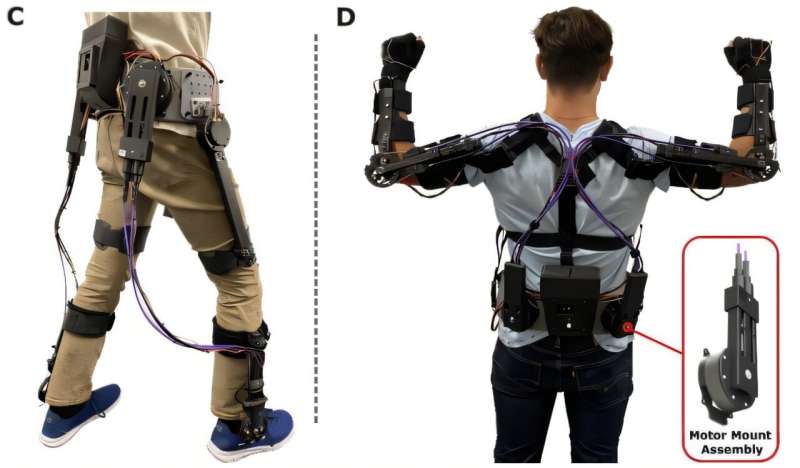
Picture a world where individuals with mobility challenges can walk unaided, thanks to robotic technology. A fresh initiative from Northern Arizona University is making strides towards this vision with a new open-source robotic exoskeleton.
Creating these high-tech devices has typically been a costly and lengthy process, which can deter research efforts. However, this could be about to change. Associate professor Zach Lerner, along with his team at NAU’s Biomechatronics Lab, has developed the first detailed open-source exoskeleton framework, which is now accessible to people all over the globe. This development aims to tackle major hurdles faced by exoskeleton researchers and developers.
For an exoskeleton to be effective, it must be biomechanically sound for the user, necessitating a lot of testing and customization. Additionally, these devices are made up of numerous moving parts and different technologies, requiring a diverse range of skills in engineering, computer science, and even human physiology. Lerner’s system addresses these issues by allowing new developers to build on the extensive groundwork laid by others.
Known as OpenExo, this framework—detailed in the journal Science Robotics—offers clear instructions for constructing both single-joint and multi-joint exoskeletons, complete with design files, coding examples, and detailed building guides. And the best part? It’s completely free to use.
“This project is crucial for the research community as it lowers the barriers for entry,” Lerner commented. “With grant funding decreasing, systems like OpenExo are essential for supporting cutting-edge research in robot-assisted mobility and rehabilitation.”
His team has already made a difference by helping children keep pace with their peers and aiding patients with walking disorders in enhancing their recovery. Their work has garnered significant funding and led to the launch of a start-up that produced a robotic ankle device. Additionally, Lerner and his team have secured nine patents related to these exoskeleton technologies.
Lerner envisions a surge in research in this field with the implementation of OpenExo.
“Exoskeletons can profoundly enhance abilities,” he noted. “There’s nothing quite as rewarding as developing technology that can make a real difference in someone’s life.”
Postdoctoral researcher Jack Williams is the lead author of the study.
More information:
Jack Williams et al, OpenExo: An Open-Source Modular Exoskeleton to Augment Human Function, Science Robotics (2025). DOI: 10.1126/scirobotics.adt1591. www.science.org/doi/10.1126/scirobotics.adt1591
If you would like to see similar Tech posts like this, click here & share this article with your friends!

